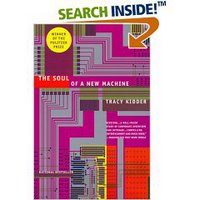
One of my earliest personal computer systems wasn't really what you might think of when you think "personal computer". However, the HP-41C was a true programmable system that had a wealth of software and peripherals available. This flagship scientific programmable calculator introduced in 1979 was a favorite of engineers and scientists world wide, and was sold in various incarnations until HP introduced a successor, the HP-48 in 1986. However, the HP-48 never created the groundswell of the 41, largely because of the advent of the PC.
 At one point in the mid 80's I owned the following peripherals for this powerful little handheld: Card Reader, Bar Code Wand Reader, Thermal Printer, Tape Drive, Time Module, Memory Module, Math Module, and many more. Software was available on plugin ROM modules or wand scannable books, and I had special binders that could store the little mag cards that you would save programs on and label with a pencil.
At one point in the mid 80's I owned the following peripherals for this powerful little handheld: Card Reader, Bar Code Wand Reader, Thermal Printer, Tape Drive, Time Module, Memory Module, Math Module, and many more. Software was available on plugin ROM modules or wand scannable books, and I had special binders that could store the little mag cards that you would save programs on and label with a pencil.  One of the greatest features was a hack that allowed one to escape from the internal RPN based operating language to the core assembly of the internal 64 bit custom HP "Saturn" processor. This came to be known as "Synthetic Programming" and a whole industry of books and software evolved around this.
One of the greatest features was a hack that allowed one to escape from the internal RPN based operating language to the core assembly of the internal 64 bit custom HP "Saturn" processor. This came to be known as "Synthetic Programming" and a whole industry of books and software evolved around this.These reliable programmable handhelds could be daisy chained to an HP-IL ring bus that could connect to HP peripherals and scientific instruments and control an entire lab of equipment. There remains a dedicated group of enthusiasts even today and you can find many links, software, and emulators on the web. Check out the Museum of HP Calculators for lots of detail on the HP-41C and many others.

If you want to learn more about this powerful handheld system but don't want to pony up the $ on eBay, Check out nsim, an excellent HP-41CV emulator (Mac). Of course you'll need the Owner's Handbook and Programming Guide which is reproduced here in excellent detail. A search on Google will result in an astounding number of links to enthusiast sites and active communities of users. Long live the HP-41C!





